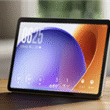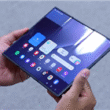Breakthrough in Brain-Computer Interfaces: Introducing Dynamic Electrodes
Summary
- Introduction of NeuroWorm: Scientists have developed a groundbreaking neural fiber electrode called NeuroWorm that enables dynamic movement within biological systems.
- Dynamic Electrode Technology: This innovative approach overcomes the limitations of traditional static electrodes, paving the way for new applications in brain-computer interfaces.
- Versatile Applications: The technology demonstrates capability in both brain and muscle monitoring, showing long-term stability and functionality.
Recent advancements in the field of brain-computer interfaces (BCIs) have taken a significant leap forward with the introduction of a new type of electrode known as NeuroWorm. Researchers from the Shenzhen Advanced Technology Research Institute of the Chinese Academy of Sciences, in collaboration with experts from Donghua University, unveiled this innovative technology, which was featured in a notable publication.
The Limitation of Static Electrodes
Traditional implanted electrodes within BCIs typically fixate on a single position, offering limited functionality. They rely on static placement, which leads to issues such as passive signal collection and, through immune responses, potential failures in signal conduction. This has significantly curtailed the effectiveness and future application of BCIs.
The NeuroWorm: A Game-Changer
In a noteworthy shift from previous methodologies, the research team has introduced NeuroWorm, a neural fiber electrode that measures a mere 196 microns in diameter. This electrode is renowned for its ultra-thin structure, flexibility, and stretchability.
Innovations in Design and Manufacturing
The complexity of the innovation lies in the electrode’s design. The researchers faced the daunting task of integrating multiple independent electrode channels along the fiber, akin to embedding fine threads on a hair without entanglement. After five years of meticulous research, including steps like the preparation of ultra-thin flexible films and conductive patterns, they achieved a successful design that incorporates up to 60 electrode channels.
How NeuroWorm Operates
One of the standout features of NeuroWorm is its ability to dynamically navigate within biological systems. Tiny magnetic heads have been embedded at one end of the electrode, facilitating movement under an external magnetic field. Coupled with high-precision magnetronization systems and real-time image tracking technology, NeuroWorm can traverse within the body, allowing researchers to actively monitor different targets as needed.
The ability for the electrode to "roam" within a biological environment, such as the skull of a rabbit, marks a significant advancement in the BCI field. This dynamic operation results in high-quality bioelectric signal recording, making NeuroWorm versatile for various applications.
Beyond Brain Applications
The research team’s success does not end with the brain. They have also demonstrated the electrode’s long-term functionality within muscle tissue. Using minimally invasive implantation techniques, NeuroWorm electrodes were shown to perform stably for over 43 weeks within the leg muscles of rats. This means that the electrodes can roam on the muscle surface and adjust their position effectively, enabling daily monitoring changes after implantation.
Implications for Future Research
The introduction of dynamic electrodes like NeuroWorm opens a new frontier for brain-computer interfaces, leading to several potential applications in both medical and technological fields. This revolutionary technology not only enhances signal acquisition but could also significantly improve the quality of life for individuals with nerve damage or neurodegenerative diseases.
Conclusion
The development of NeuroWorm represents an important milestone in the advancement of brain-computer interface technologies. By transitioning from static to dynamic electrode systems, researchers have expanded the horizons for practical applications in both neuroscience and rehabilitation. As further studies and applications unfold, the potential impacts of such dynamic interfaces could be transformative, ushering in a new era of neurotechnology.
In summary, NeuroWorm has not only challenged existing paradigms in the BCI field but has also set the stage for future innovations aimed at improving human-computer interactions through more sophisticated neural interfaces.
With continuous exploration and refinement, technologies like NeuroWorm promise to reshape the landscape of medical treatments and biological monitoring, ultimately enhancing our understanding of the human nervous system and its capabilities.







